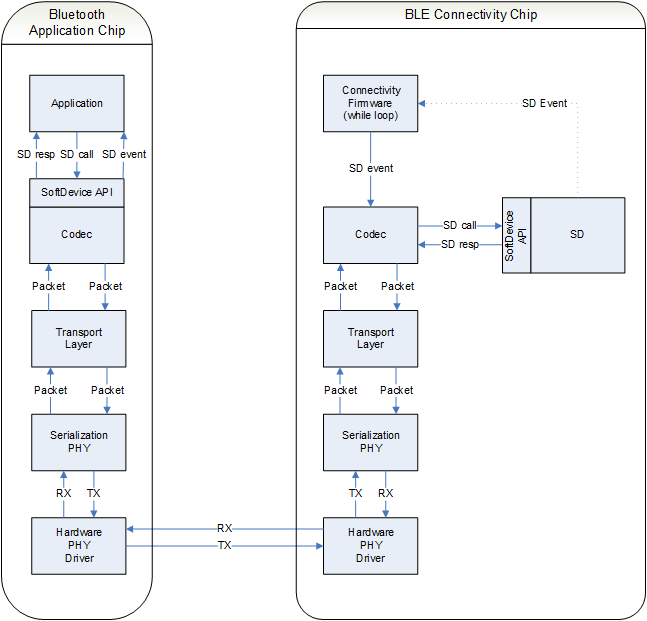 |
nRF51 SDK - S130 SoftDevice
|
 |
nRF51 SDK - S130 SoftDevice
|
The BLE Serialization makes it possible to place a Bluetooth application on an Application chip and connect it to a Connectivity chip running the BLE SoftDevice.
See Running a serialized application for a general overview of how to start with serialization.
Connectivity Chip: Connectivity Chip
Bluetooth Application Chip: The nRF51822 chip is used merely as a demonstration device running a serialized application, where the BLE SoftDevice is replaced by the Commands Encoder and Events Decoder (Serialization Codecs). The nRF51822 used as Application chip does not use the BLE SoftDevice. After porting hardware driver for selected PHY layer (Serialization PHY), nRF51822 at application side is supposed to be replaced by user's device .

In the Bluetooth Application chip, the BLE SoftDevice is replaced by a codec implementing the SoftDevice API.
All function calls to the codec will be serialized and transmitted to the BLE Connectivity Chip using the transport layer drivers.
This design makes it possible to substitute an existing PHY layer, such as UART or SPI, without affecting the codecs.
The BLE Connectivity chip will decode the serialized commands from the Bluetooth Application Board and execute the corresponding function in the SoftDevice .
Any event from the SoftDevice is encoded by the codec and transmitted to the Bluetooth Application chip using the the transport layer.
In the Bluetooth Application chip the event is decoded and passed to the application.
BLE Serialization simplifies the serialization of an existing Bluetooth application, since limited modifications are needed in the application itself.
Details on how to port the serialization application code to a different MCU can be found in the porting guide: Porting serialization libraries
See Running a serialized application for information about how to wire a Bluetooth Application Board with a BLE Connectivity Board.